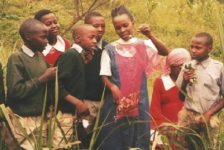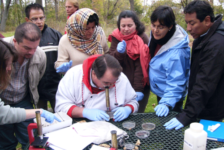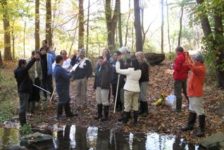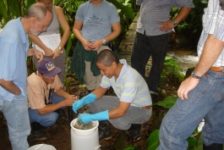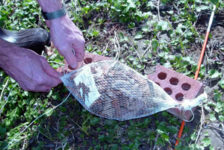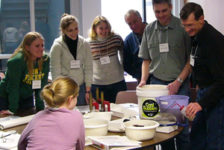In this issue: Leaf Pack Ambassadors: Leaf Pack Goes Spanish; Macroinvertebrate Review: Mayflies vs. Stoneflies; News And Success From The Classroom; Online Macroinvertebrate Key.
Leaf Pack Ambassadors: Leaf Pack Goes Spanish
In October, Stroud Water Research Center hosted 17 people from Central and South America for an intense 5-day workshop.
Participants — who included educators, conservation professionals, and government agency representatives — took the Spanish version of the Leaf Pack Network® manual back to their countries.
They will conduct a LP workshop in their home watersheds and provide us feedback on the manual as well as the procedures, which we had slightly modified for tropical streams to take into account local leaf fall as well as seasonal changes (dry vs. wet season).
For more information on this workshop please visit: Stroud Water Research Center’s website.
“What is nobler than to mold the character of the young? I consider that he who knows how to form the youthful mind is truly greater than all the painters, sculptors and all others of that sort.” — John Chrysostom.
Macroinvertebrate Review: Mayflies vs. Stoneflies
I wanted to use this “corner” to give a review of commonly misidentified macroinvertebrates. In the last LPN E-newsletter I distinguished between hellgrammites and caddisflies. This time we look at the differences between mayflies and stoneflies, which are often mistaken for each other.
Common Characteristics
- 6 jointed legs on the thorax
- Observable wing pads on the thorax
How They Differ
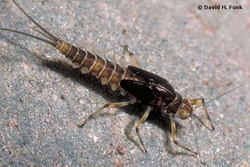
Mayflies have:
- Two OR three tail filaments
- Gills on the abdomen

Stoneflies have:
- Two tail filaments
- Gills on the thorax
News And Success From The Classroom
Last spring, Jen Gilbert and I (first year rookies with this project) combined our classes to take part in the Leaf Pack Activity. Jen and I had placed the leaf packs some six weeks earlier in a small stream that adjoins school property. We had set ten leaf packs along this stream.
About a week before we were to remove the packs, there were torrential downpours. One of Jen’s students mentioned seeing something very similar to a leaf pack float by his house that week. Apprehensive, Jen and I went down to the stream the day before the activity, only to discover that all but two packs had been washed away.
We ended up dividing these packs among eight classes (combined into six groups) and found that it worked. To our surprise, it didn’t take a lot of leaf matter for students to discover a myriad of creatures. There were bent heads all over the classroom, as small groups of students from different groups explored together. There was the joy of finding a giant leech, and the excitement of watching dozens of planarians work their way around the white container.
Students rushed their finds to dissecting scopes and to the keys in the front of the room. Jen and I were able to enjoy and aid as needed, as students were so engaged that our supervision seemed secondary to helping them key out the organisms. Students became so attached to their discoveries, that they actually carried them back down to the stream at the end of the day and set them free.
Thank you so much for showing us this fantastic project. Despite our setback, the success of this project (and the ease of using the materials) really encouraged us to continue it this year.
— Rachele Colantuono, Scarsdale Middle School, NY
Online Macroinvertebrate Key
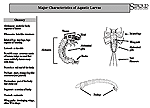
A macroinvertebrate identification key developed by educators at Stroud Water Research Center is now available online.
Feel free to print and duplicate but please:
- Maintain the Stroud Water Research Cemter logo.
- Do not make any modifications.
The key can be found on Stroud Water Research Center’s website.



